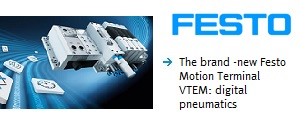Ice age – small inverter, big impact
Ratingen, Germany 24th April 2014
Mitsubishi Electric frequency inverter with stall prevention ensures improved efficiency and performance in traditional ice cream production.
Whatever the flavour – a classic such as vanilla, strawberry or chocolate or an experimental flavour such as orange-basil, lime blossom-caramel or sour cream-cress – the important thing is that the ice cream parlour will always be able to serve creamy, firm ice cream. It should melt delicately on the tongue without being watery and it should have an intense yet natural flavour. The traditional method of production used by ice cream manufacturers demonstrates true craftsmanship. Special machines are used to ensure the automated production of ice cream of correspondingly high quality. Under no circumstances should an unscheduled stop of the ice cream production process be allowed. If the paddle motor were to stop working and disrupt the kneading and freezing process, the dairy product would no longer be fit for use. Additives such as milk and flavourings as well as water and electricity would then be wasted. In order to eliminate this risk, Kälte-Rudi – the market leader in the manufacture of ice cream machines – installed the compact Mitsubishi Electric FR-E700 series frequency inverter in its Diagonal-Freezer®, first of all on a trial basis. The powerful reliable inverter was a great success and not just on account of its integrated stall protection. Following this experience, the company decided to use the Mitsubishi Electric components in its ice cream machine as standard. In addition, the company plans to use the inverter in other machines as well.
High-end drive power
Founded half a century ago, Kälte-Rudi’s wide range extends from ice cream machines up to pasteurisers and cream pasteurisers. Its mobile machines are mainly used by ice cream parlours, bakeries, confectioners and commercial kitchens. The medium-sized company from Baden-Württemberg markets its “Quality made in Germany” all over the world.
The Diagonal-Freezer® – an ice cream machine from Kälte-Rudi – is characterised by its patented design featuring a diagonally installed production cylinder and agitator with kneading function. The machine produces creamy ice cream with optimum volume, storage stability and shelf life as well as minimal residual water and no recrystallisation. The Diagonal Freezer® can process between four and 16 litres of liquid ice cream mixture per production process, depending on the model. Markus Moosmann, Technical Director Electrical Engineering at Kälte-Rudi, describes the process: “The first step as part of thetraditional method of producing ice cream involves pasteurising the additives. It would, of course, also be possible to use an already pasteurised finished mixture as a base for adding flavouring. However, for most of our customers it is important to produce their own ice cream mix, as it is an essential part of their craftsmanship. Afterwards the liquid is poured into the ice cream machine. During the process, air is bound into the liquid in order to give the ice cream its creamy consistency as well as more volume. Larger machines with a four-cylinder compressor can process up to 16 litres of mix, producing 20 to 25 litres of ready-to-eat ice cream.”
The drive can often be pushed to the limit as ice cream is difficult to handle. Compared with supermarket ice cream, traditionally produced ice cream is considerably firmer and ideally contains a lot less water. When the machine is mixing several litres of ice cream, it is only the movement of the ice cream that keeps it “liquid”. If the paddle should stop working, the viscous mass would turn into a solid block of ice that would have to be defrosted in order to remove it from the machine. Like any dairy product, you can’t refreeze ice cream that has melted as otherwise there would be a risk of salmonella forming, for example. So if the motor has stopped unexpectedly during the mixing process, the product would be rendered useless. Besides this the ice cream maker would also have wasted all the additives used, as well as the power for the drive and water for cleaning.


























